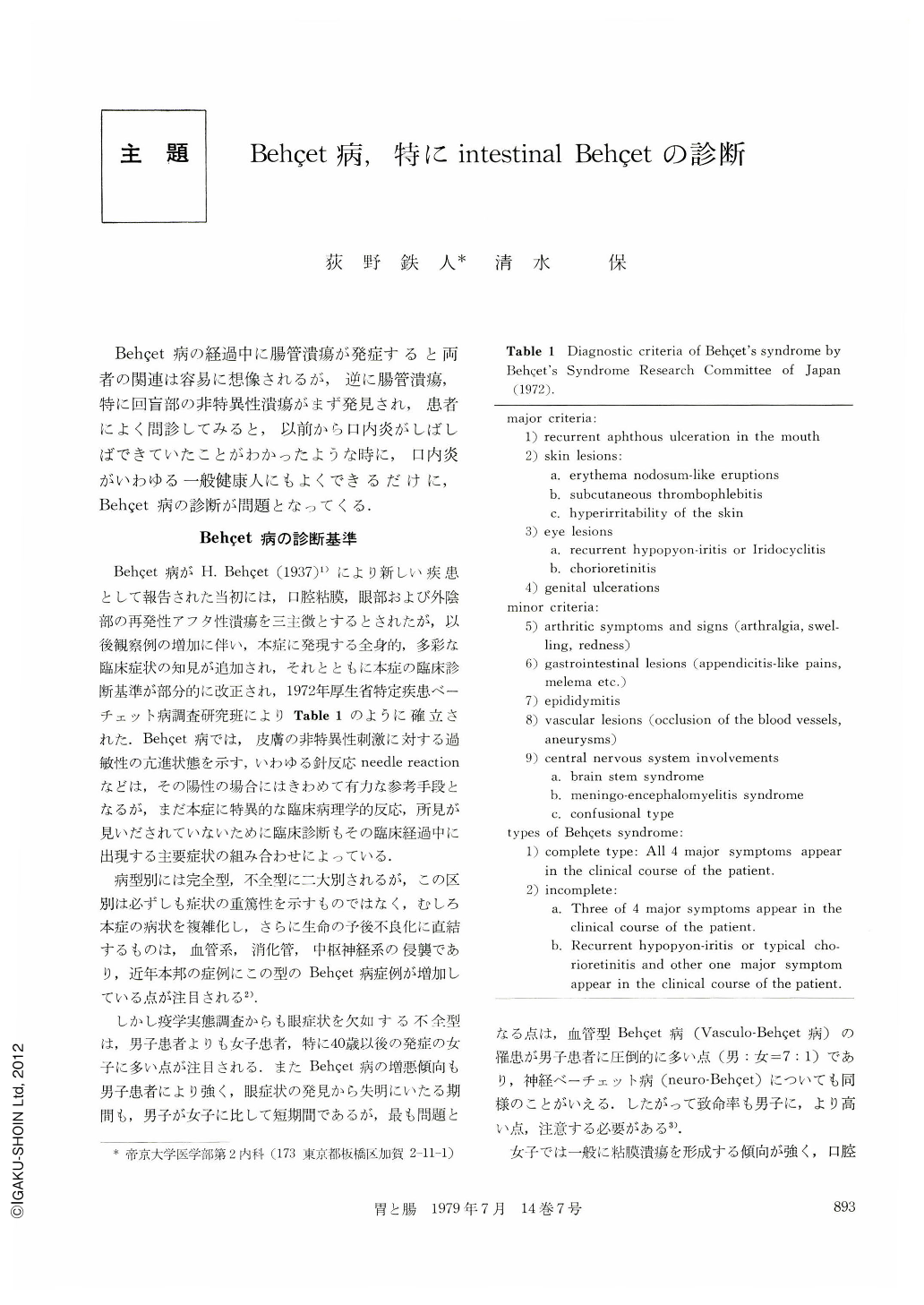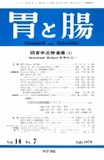Japanese
English
- 有料閲覧
- Abstract 文献概要
- 1ページ目 Look Inside
- サイト内被引用 Cited by
Behcet病の経過中に腸管潰瘍が発症すると両者の関連は容易に想像されるが,逆に腸管潰瘍,特に回盲部の非特異性潰瘍がまず発見され,患者によく問診してみると,以前から口内炎がしばしばできていたことがわかったような時に,口内炎がいわゆる一般健康人にもよくできるだけに,Behcet病の診断が問題となってくる.
The Behcet's Disease Research Committee of Japan, established by the Ministry of Health and Welfare in 1972, developed a set of diagnostic criteria. The criteria are set forth in table 1; they serve better for purposes of classification than as discriminators, however. Because of the frequency of their conjunction, recurrent oral aphthous ulcers, skin eruptions (especially those resembling erythema nodosum, folliculitis, and subcutaneous thrombophlebitis), ocular involvement (especially uveitis), and genital ulceration are considered the four major symptoms of the disease.
Articular, gastrointestinal, vascular, and nervous system involvement were classified as minor criteria, not because lesser severity or better prognosis was claimed, but because frequency of occurrence was significantly less. Epididymitis and other organ symptoms have recently been added to this classification as well.
It was proposed by this Committee that if all four major symptoms appeared during the clinical course of the patient's disease, the syndrome would be labeled “complete” while if only three of the four major symptoms appeared, it would be called incomplete. If a particularly characteristic finding, such as recurrent hypopyon iritis or typical chorioretinitis appeared, then only one other major symptom needed to develop for a diagnosis of “incomplete type” to be tenable. Any number of minor criteria could accompany any of the major criteria, however. The complete type is not necessarily more severe than the incomplete type. In all instances, ocular involvement tends to present the most serious problems for the patient. Blindness remains a potent threat. However, deaths resulting from Bechet's syndrome (a mortality rate of 3 to 4%) usually result from rupture of aneurysms, perforation of the intestines, or severe central nervous system involvement.
11 cases of Behcet syndrome with intestinal involvement treated by bowel resection were shown with past history and present illness. Clinical courses were noted in Table 4. These cases were divided into two pattern; (Ⅰ) Behcet syndrome preceding, (Ⅱ) Ietestinal ulcers preceding.
In the former pattern, (Ⅰ), major symptoms of Behcet syndrome appear before bowel resection, and in the latter pattern, (Ⅱ), major symptoms appear after bowel resection.

Copyright © 1979, Igaku-Shoin Ltd. All rights reserved.


